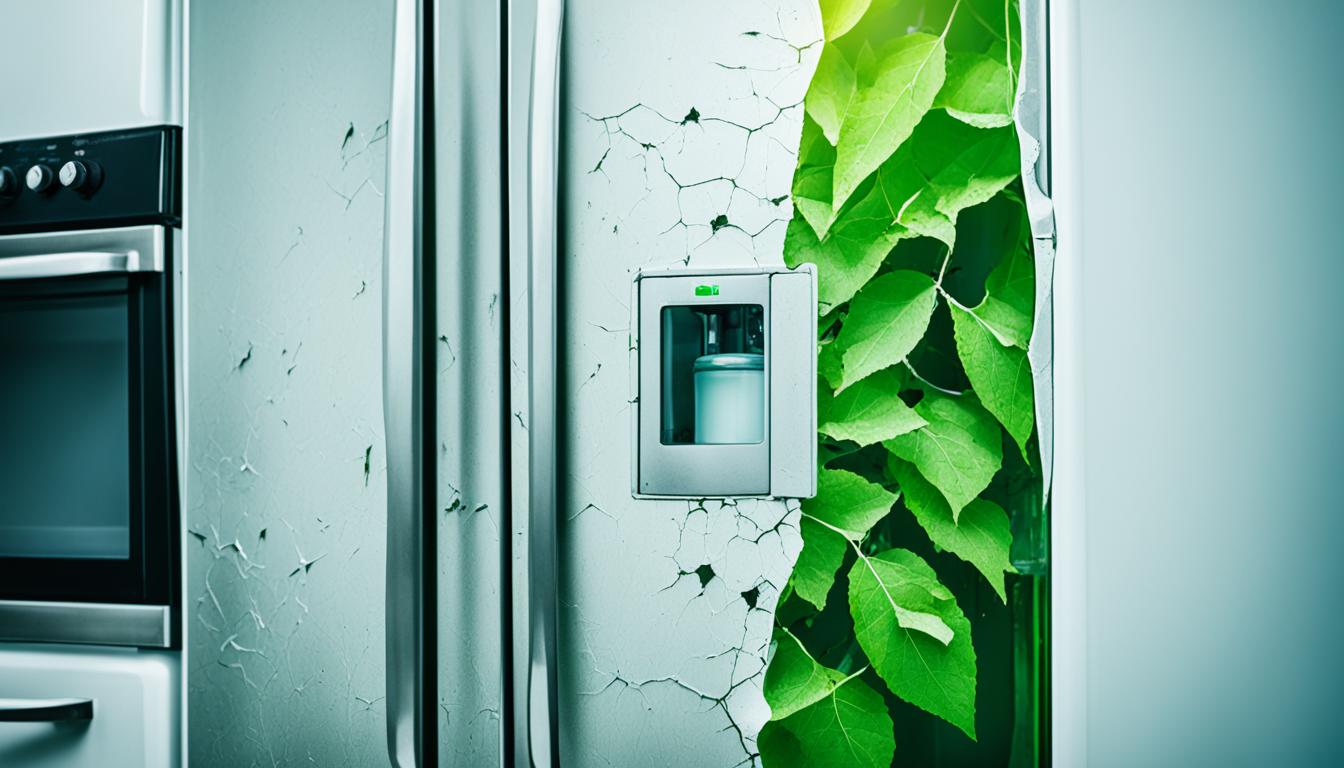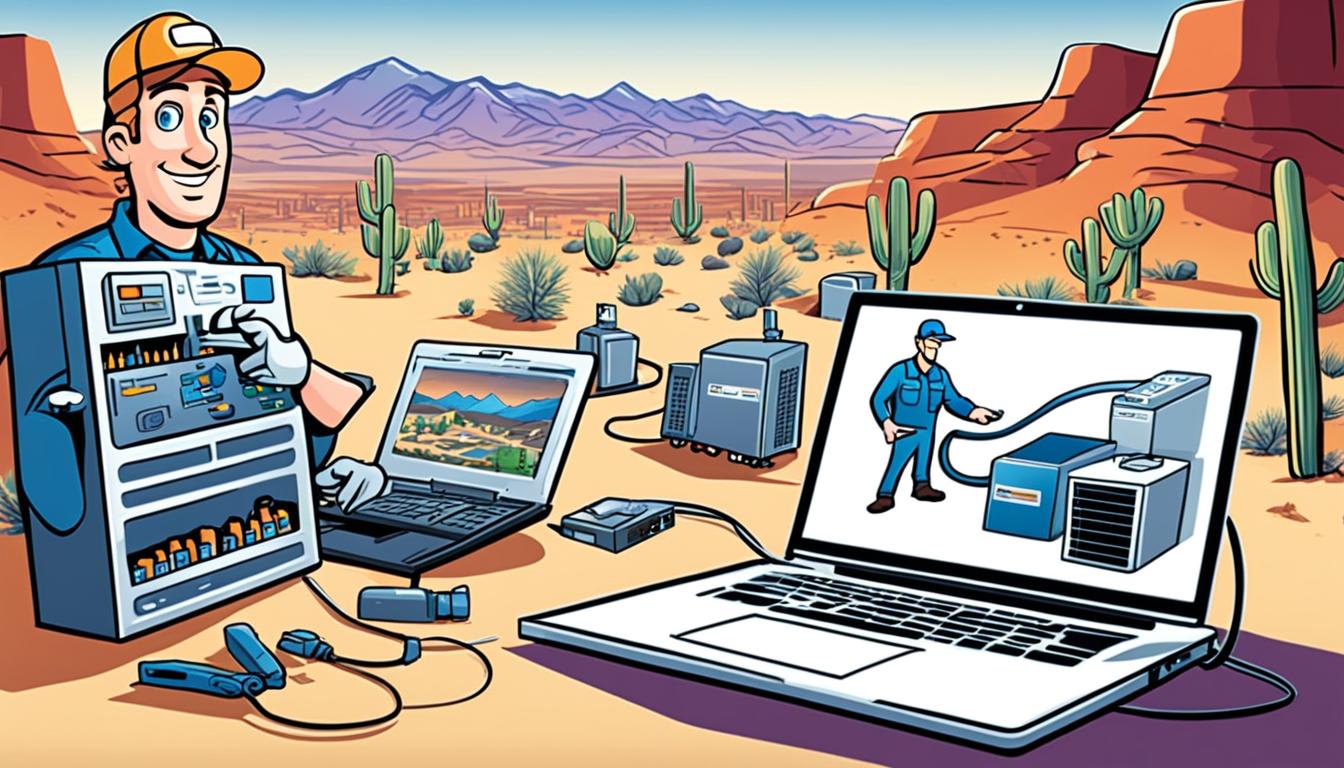Imagine this: it’s a sweltering summer day, and you enter your home or office, seeking refuge from the oppressive heat. You make a beeline for the air conditioning, eagerly anticipating the cool relief that awaits you. But as you step into the room, you realize something is wrong. The air feels stale, and the temperature is far from refreshing. It’s a frustrating and uncomfortable experience, one that leaves you longing for the cool comfort that seems just out of reach.
Now, think about the impact of not addressing refrigerant leaks promptly. It’s not just about personal discomfort; it’s about the larger consequences that our actions, or lack thereof, have on the environment. Refrigerant leaks may seem like a small issue, but they have significant environmental implications that should not be ignored.
Most refrigerants used in HVAC systems are greenhouse gases, and some are also ozone-depleting substances. These leaks contribute to both climate change and the depletion of the ozone layer. The environmental consequences of not addressing refrigerant leaks promptly include increased global warming potential, air pollution, and harm to the ozone layer.
Key Takeaways:
- Refrigerant leaks have significant environmental impacts, including contributing to climate change and ozone layer depletion.
- Most refrigerants used in HVAC systems are greenhouse gases and some are ozone-depleting substances.
- Not addressing refrigerant leaks promptly increases global warming potential and air pollution.
The Financial Cost of Refrigerant Leaks
Refrigerant leaks not only have detrimental environmental impacts but also come with significant financial costs. Whether you’re a business owner or an individual, addressing these leaks promptly is essential to avoid financial strain.
- Replacement Cost: The expense of replacing lost refrigerant can be substantial, particularly for large commercial operations. The price of refrigerant itself, coupled with the labor costs involved in refilling the system, can quickly add up. It’s crucial to consider the financial burden of replacing refrigerant when calculating the overall cost of a leak.
- Reduced Energy Efficiency: Leaks in refrigerant systems can lead to reduced energy efficiency. When refrigerant levels are low, the system has to work harder to maintain the desired temperatures. This increased energy consumption translates to higher utility bills. By addressing refrigerant leaks promptly, you can maintain optimal energy efficiency and keep your operational costs in check.
It’s evident that refrigerant leaks have a direct impact on your financial bottom line. The combination of refrigerant replacement costs and reduced energy efficiency can have a significant financial strain on businesses and individuals alike.
Addressing refrigerant leaks promptly not only helps protect the environment but also saves you money in the long run. By prioritizing leak detection and repair, you can minimize the financial implications and maintain energy-efficient operations.
The table below provides a breakdown of the potential financial cost associated with refrigerant leaks:
| Leakage Severity | Replacement Cost | Increased Energy Consumption |
|—————–|—————–|—————————–|
| Minor | $500-$1,000 | 5-10% |
| Moderate | $1,000-$5,000 | 10-20% |
| Severe | $5,000-$10,000+ | 20-40% |
As you can see, the financial implications vary depending on the severity of the leak. It’s crucial to address even minor leaks promptly to avoid escalating costs and reduced energy efficiency.
The Environmental Cost of Refrigerant Leaks

Refrigerant leaks pose a significant environmental cost that cannot be ignored. The refrigerants used in HVAC systems are potent greenhouse gases, contributing to global warming and climate change. When these gases leak into the atmosphere, they directly contribute to the accumulation of greenhouse gas emissions, further exacerbating climate change.
Moreover, these leaks also pose health risks to both humans and the environment. Prolonged exposure to refrigerant gases can lead to respiratory issues and skin irritation, adversely affecting the well-being of individuals and ecosystems. It is crucial to address refrigerant leaks promptly to minimize their environmental impact and protect human health.
Greenhouse Gas Emissions
The leakage of refrigerants results in the emission of potent greenhouse gases, such as hydrofluorocarbons (HFCs), into the atmosphere. HFCs have a high global warming potential, which means they have a greater capacity to trap heat in the atmosphere compared to other greenhouse gases.
To put it into perspective, one kilogram of certain HFCs can have a global warming potential equivalent to several thousand kilograms of carbon dioxide over a 100-year period. These emissions contribute to the overall increase in greenhouse gas concentrations, leading to the intensification of climate change and its associated impacts.
Health Risks
The release of refrigerant gases not only affects the environment but also poses health risks to individuals who come into contact with them. Prolonged exposure to refrigerant leaks can cause respiratory issues, such as coughing, difficulty breathing, and irritation to the eyes, nose, and throat. Additionally, these gases can cause skin irritation and allergic reactions, further compromising human health.
It is crucial for HVAC professionals and technicians to prioritize leak detection and repair to minimize the release of these harmful gases and protect both the environment and human well-being.
| Environmental Impact | Consequences |
|---|---|
| Greenhouse Gas Emissions | Contributes to climate change and global warming |
| Depletion of the Ozone Layer | Contributes to the thinning of the ozone layer, increasing UV radiation |
| Air Pollution | Contributes to poor air quality and respiratory issues |
| Ecological Disruption | Can harm ecosystems and disrupt biodiversity |
Preventing and Addressing Refrigerant Leaks
To ensure optimal system performance and minimize environmental impact, preventing and addressing refrigerant leaks is of utmost importance. Regular maintenance and early leak detection play a crucial role in this process. By following a few key strategies, you can effectively prevent and address refrigerant leaks in your HVAC systems.
Regular maintenance is the first line of defense against refrigerant leaks. Conduct routine tasks such as checking refrigerant levels and inspecting coils for damage. These simple actions can go a long way in identifying and addressing leaks early on, preventing them from developing into larger, more costly problems.
Professional maintenance and regular inspections are vital in ensuring early leak detection. Seeking the expertise of HVAC professionals who specialize in refrigerant systems can provide a comprehensive assessment of your equipment. They have the knowledge and tools to identify potential leaks before they become significant issues, saving you time and money in the long run. Investing in regular inspections can help maintain system efficiency and minimize the risk of unexpected breakdowns.
Promptly addressing refrigerant leaks is critical not only for system performance but also for reducing energy consumption. Leaks can cause your HVAC system to work harder to maintain the desired temperature, leading to higher utility bills. By taking swift action to repair any leaks, you can restore your system’s efficiency and decrease energy usage.
Regular maintenance, professional inspections, and early leak detection are key strategies in preventing and addressing refrigerant leaks. By implementing these practices, you can ensure the longevity of your HVAC systems, reduce energy consumption, and contribute to a healthier environment.





0 Comments